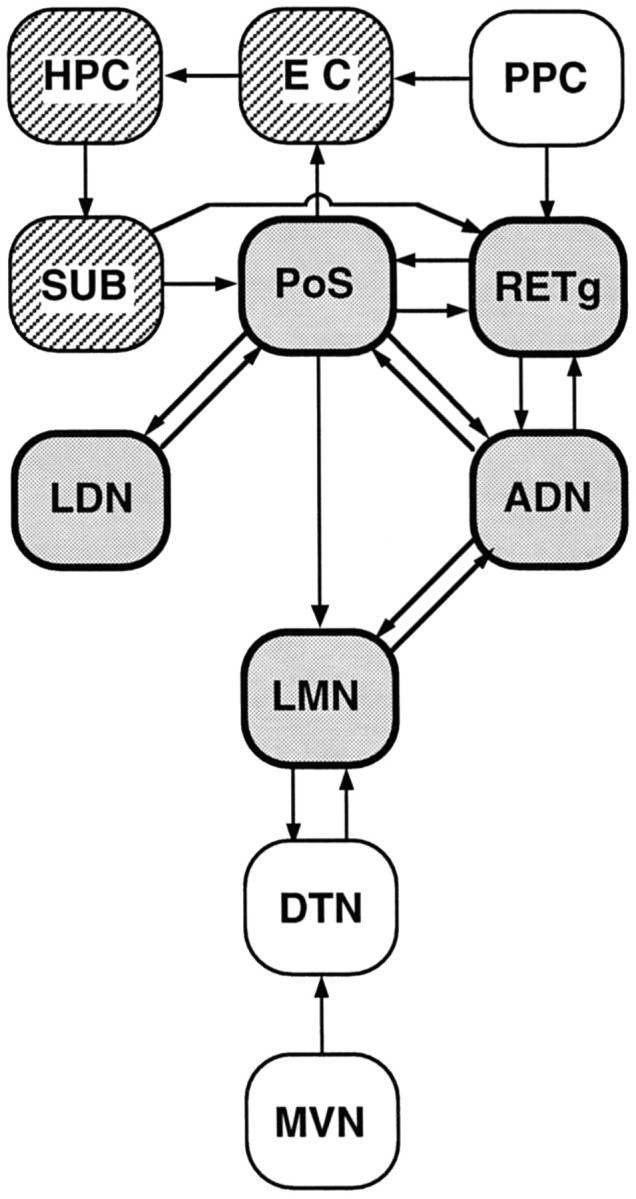Fig. 10.

A schematic diagram illustrating the anatomical connections among structures that may comprise a limbic circuit processing allocentric spatial information. The heavily outlined, shaded boxes represent structures from which HD cells have been recorded; the striped boxesrepresent structures containing neurons whose firing is dependent on location (i.e., place cells). These two distinct cell types, conveying representations of location and directional heading, may provide information to support spatial memory and navigation. As discussed in the introductory remarks, idiothetic cue sources, such as vestibular information, may impinge on the HD cell-containing network by way of projections from brainstem structures. Vestibular input is critical for the ADN HD cell firing (Stackman and Taube, 1997), and this diagram suggests a disynaptic pathway (MVN → DTN → LMN) by which vestibular signals could influence the HD cell circuitry. In contrast, landmark-based cue information might be conveyed to the HD cell circuit via input from devoted cortical regions, such as the visual, tactile, and auditory cortices, converging on the posterior parietal cortex (PPC). The arrows betweenboxes indicate the flow of information between structures and are based on the anatomical literature.ADN, Anterior dorsal nucleus of thalamus;DTN, dorsal tegmental nucleus; EC, entorhinal cortex; HPC, hippocampus; LDN, lateral dorsal nucleus of thalamus; LMN, lateral mammillary nucleus; MVN, medial vestibular nucleus;PoS, postsubiculum; PPC, posterior parietal cortex; RETg, retrosplenial granular cortex;SUB, subiculum.
